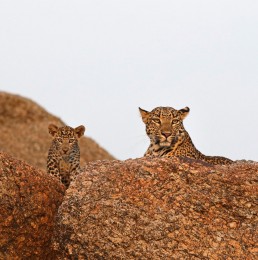A Journey of Discovery
FEATURE
Feature
The Top End of Australia’s Northern Territory is alive in ways unlike other parts of our country. Offering a rare preview into original Australia, time spent on Country in Arnhem Land is an honour granted by Australia’s First Nations People, one of the oldest surviving cultures in the world. The ancestral ground here is sacred, and on arrival when you really connect with your surroundings, you can sense it with every fibre of your being.
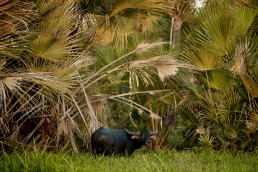
From the moment our charter flight from Darwin lands on the red dirt runway of Murwangi Safari Camp in East Arnhem Land, it’s apparent the Jagat crew are in for a lifetime memory unlike any other. Commissioned by Outback Spirit for Journey Beyond, Jagat are onsite to film this area of immense cultural significance which overlooks the vast Arafura Swamp, one of the most spectacular locations in Arnhem Land.
With permission from Traditional Owners and the Northern Land Council, Outback Spirit has established a luxurious safari camp here, which serves as a remarkable vantage point to explore the wildlife of the area and learn first-hand about Indigenous culture from the Traditional Owners of this very special part of the world.
Providing the only tourism accommodation within the area, this sensational tented safari camp – only available to Outback Spirit guests – has a fully licensed restaurant with in-house chef, safari suites with ensuites and air conditioning, and exclusive access to cultural activities found within the area.
While the weather is fabulous and the wildlife appears around the end of April, the season officially starts in May, with Murwangi Safari Camp teeming with fauna in July and August. With the wet season well and truly in the rearview mirror by this time, birds are migrating in their thousands and the exposed riverbanks provide the perfect relaxation place for the abundance of water buffalo and crocodiles found within the area.
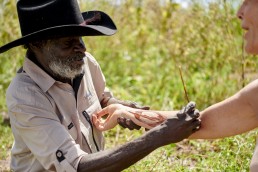
A short charter flight from Murwangi Safari Camp and our team arrive in Seven Spirit Bay, an iconic wilderness lodge on the Cobourg Peninsula. Set amid the pristine marine sanctuary of Garig Gunak Barlu National Park, it’s distinct rocky red cliffs, forested wetlands and white sand beaches are the thing of postcards from years gone by.
It’s here that wildlife lovers unite. Garig Gunak Barlu National Park is a protected Ramsar Conservation site and a unique wetland of biological diversity. With more than 200 species of bird populating the marshes and forests, the area is incredible for bird watching. But that’s where the wildlife watching starts.
Between the estuaries and the turquoise blue waters of the Coburg Peninsula, the marine life is thriving with saltwater crocodiles, manta ray, dolphins, and endangered dugong, while buffalo and banteng cattle still roam the bush.
For those that prefer land adventures, one of the best ways to explore the rugged Coburg Peninsula and the beautiful unspoilt wilderness, is by open back 4WD safari. Seven Spirit Bay offers visits to Rainbow Beach, Vashon Head, and Nipa Palm Gallery.
What a wonderful privilege to experience a journey of discovery on this sacred land firsthand; and while our team were all here for professional reasons, there’s no denying this adventure’s profound personal impact.
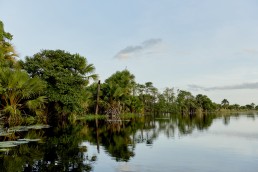
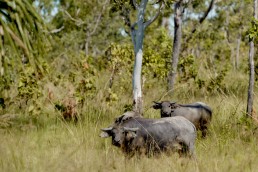
Where Rabari & Leopards Coexist
FEATURE
Feature
In the desert state of Rajasthan in north India, the hills of the Jawai are a deeply spectacular place. Home to over one hundred species of migratory birds, a multitude of thousand-year-old metamorphic rocks, granite hills, and wild leopards, the natural beauty here is as extraordinarily raw, as it is ruggedly beautiful. But it’s the connection between Jawai’s local inhabitants that places this area on the truly remarkable map.
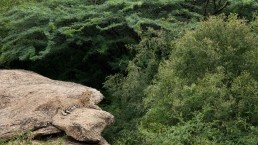
Nature has a extraordinary way of bringing different species together, often resulting in unexpected and awe-inspiring symbiotic relationships. For centuries here in the Jawai Hills, the local Rabari tribal communities – an indigenous tribe of nomadic cattle shepherds and camel herders – have lived in complete harmony with the leopards of the area. While vast numbers of people are injured and killed by leopards each year in other areas of India, there has been a notable absence of human-leopard conflict in the region for decades despite the area being so densely populated by the big cat, it’s been donned “Leopard Country.”
The community believe that the connection is spiritual, almost familial. And it’s certainly plausible. Having migrated to Rajasthan from Iran via Afghanistan over a thousand years ago, the Rabari are devout Hindus and followers of Shiva, the god of wild things who is clothed in – of all things – a leopard skin.
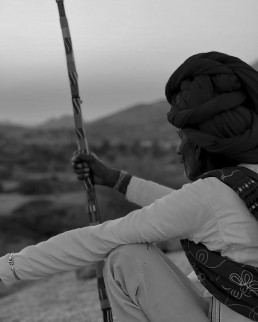
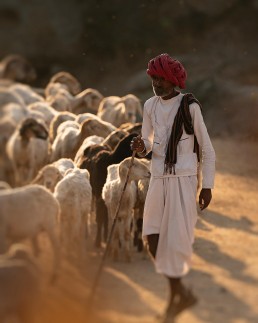
While some believe that landscape, tradition, and culture are the cornerstone of Rabari and leopard coexistence, ultimately the coexistence between the Rabari community and leopards is rooted in a delicate balance between respect, understanding, and adaptation. Both have learned to share the land and its resources, minimizing conflicts, and allowing their respective species to thrive.
Essentially the Rabari's traditional livestock management practices play a crucial role in maintaining harmony. By rotating grazing lands, the community ensures a sustainable supply of fodder for their livestock, reducing competition with leopards for resources. This practice also allows the vegetation to regenerate, benefiting both wildlife and the Rabari's herds. Equally, while there are leopards roaming the area, fields are protected from farming adversaries such as gazelles and antelopes, which can destroy a season’s yield.
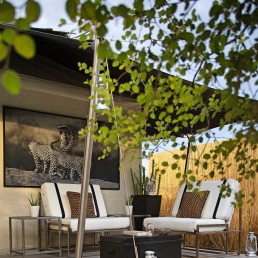
Interestingly, the presence of the Rabari’s livestock benefits leopards as well. While the leopards will occasionally prey on the weaker or sick animals within the herds, (an undertaking most Rabari consider as an offering to Shiva) this behaviour serves as a natural mechanism of population control, ensuring that only the fittest survive. Consequently, the Rabari benefit indirectly as their livestock remains healthier and more resilient.
The coexistence of the Rabari community and leopards stands as a testament to the incredible adaptability and respect that humans and wildlife can show for each other. Their symbiotic relationship, built on ancient traditions and mutual understanding, is an inspiring example for conservation efforts worldwide. As we continue to strive for harmony between humans and nature, we can learn valuable lessons from the Rabari and leopards, fostering a future where both can thrive side by side.
Our team proudly works with Sujan, a collection of unparalleled world class safari lodges found within Rajasthan, the heart of leopard territory.

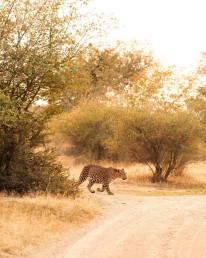
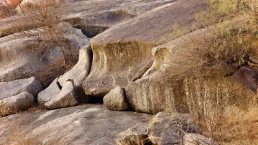
Imagery courtesy Sujan
Into the Wild with Shiro Tsujimura
FEATURE
Feature
Once in a lifetime you come across an artist with as much charisma as they have exceptional, natural born talent. Where the beauty in their artmaking belies tradition, where the purity of their creations flow from a lack of formal artistic training, where every detail across each artwork is perfectly imperfect.
Meet internationally renowned artist, Shiro Tsujimura, one of Japan’s leading ceramic artists.
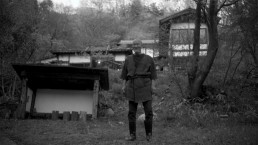
Appointed to interview Shiro Tsujimura for his first ever commission with the Aman Residence Tokyo, it was clear from the moment our team arrived at Tsujimura’s studio in the mountains of Nara, that while his creative and artistic personality was anything but conventional, his mountain – an extraordinary site which laid bare to his home, his studio, his teahouse and multiple thatched dwellings – held the key to each of his creations.
As a film crew, we arrived with an agenda. To interview, to film Tsujimura creating an ink on Washi Paper artwork, to wrap.
Tsujimura had other plans.
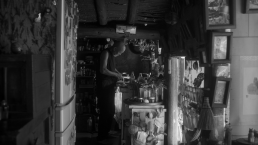
A true master, we trailed as the apprentice to his studio unsure of how the morning would transpire. Almost immediately we observed and watched in awe as he created an oversized paintbrush from overgrown reeds surrounding the studio space. Fascinated, we watched on as a 300-year-old-statue that had turned to rubble mid-earthquake, was liquefied to ink, while the floor was laced with Washi Paper ready for its inscription.
With camera’s poised, it was go time.
With each masterful stroke, Tsujimura created what would become a key commission in the Aman Residence Tokyo, for installation in 2023. Derived from nature’s beauty, and positioned to represent a restful, immersive recess for mental and physical reinvigoration, observing this Washi Paper piece come to life at the established creative hands of Tsujimura, was equal parts incredible and inspirational.
“Shall we now interview?” the team queried.
“We shall eat,” Tsujimura informed through the translator.
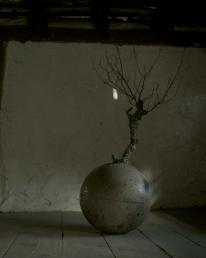
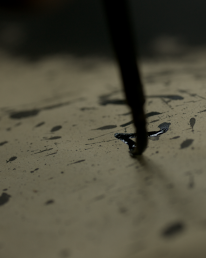
To be warmly welcomed into anyone’s home is a truly beautiful experience. To be warmly welcomed into Shiro Tsujimura’s home, to be cooked for and to break bread with this true artist was a once in a lifetime moment.
To be warmly welcomed into anyone’s home is a truly beautiful experience. To be warmly welcomed into Shiro Tsujimura’s home, to be cooked for and to break bread with this true artist was a once in a lifetime moment.
Over a humbling lunch, an ensuing matcha tea ceremony, a wonderful interview, and a dynamic dinner, what became apparent was that everything on Tsujimura’s property – including the surrounding walls of his humble cottage, the plates we ate from and the cups we drank from – was crafted from Tsujimura’s hands and the earth found on his property.
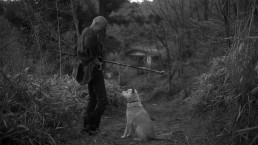
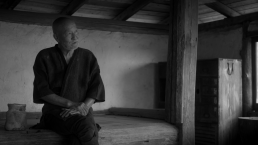
One of the greatest ceramic artists in Japan, Tsujimura is a perfectionist in his art and recognizes his obsession with achieving his goals. He works the clay, he fires it, and lets it mature and age with the passing of time. Indeed, at the time of our meeting, Tsujimura had utilised over 300 tonne of clay throughout the course of his career. Whether throwing clay or utilising an ink based medium he creates his own style and his own independent techniques, always linked, however, to the traditions of the past.
While the beauty of his works speak for themselves, Tsujimura believes that he controls 50 percent of any creative process (the remaining 50 per cent belongs to you and how you perceive his creations). To see his creations firsthand, it’s understandable that his work populates the collections of many museums throughout the world, and now the Aman Tokyo Residence.
